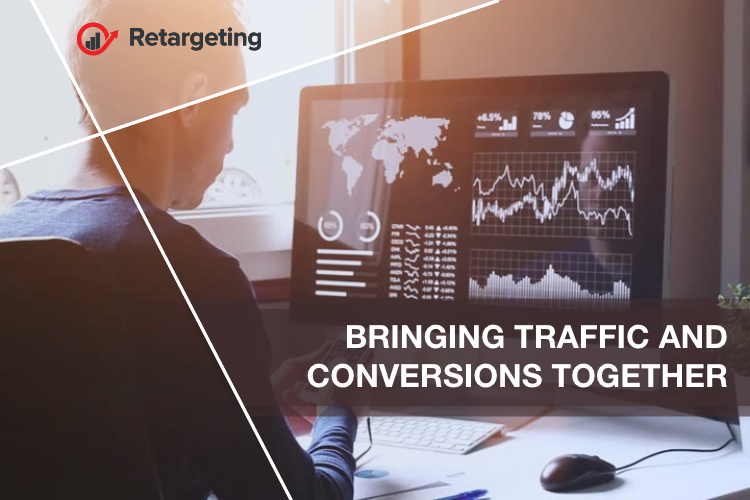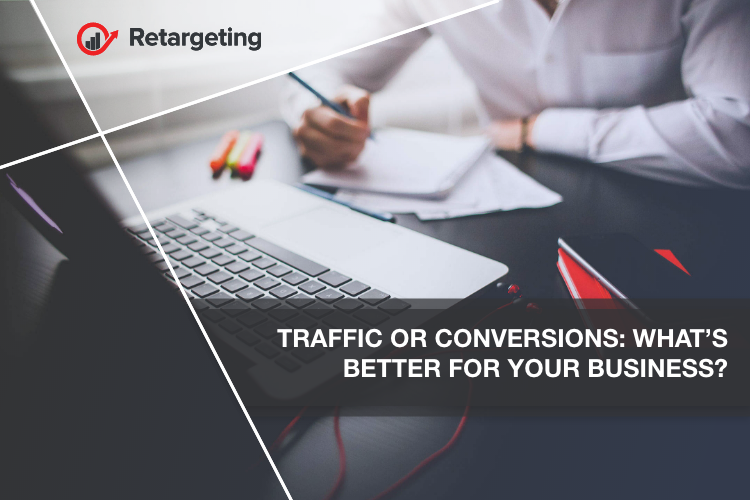Should you focus on accumulating traffic on your website, or try and increase the conversion rate from visiting customers? It’s an argument as old as the internet.
In one corner stands traffic. In the other, conversions. Advocates for the first have built vast online empires by promising to deliver a single payoff: more. Those aligned with the second say that more traffic doesn’t matter, it’s what you get that traffic to do.
Unfortunately for businesses on the front lines, the argument often produces confusion, tension, and indecision. To sort through the haze, let’s take a better look at each and how they can help your business.
The value of traffic
It’s simple. If there’s no traffic, there are no conversions. No conversions, no sales. It all starts at the top of the funnel. There are two overarching ways to get traffic to your website: paid advertising, and organic methods such as content marketing and search engine optimization (SEO). Content marketing and SEO are no doubt a hefty initial investment for driving organic traffic but done well, they become the gifts that keep on giving.
Paid advertising gives you direct and immediate control over your spend and how that translates into traffic.
While for many, conversion rate optimization seems like hard technical work, generating traffic is often as simple as more content -> more ads -> more spend.
But conversion and traffic numbers should not be treated as mutually exclusive. Traffic doesn’t guarantee purchases.
What conversion brings to the table
Organic visitors aren’t free. The time spent creating content that ranks in search and builds a profitable social media following is costly.
All traffic, whether organic or paid, is bought. Settling for the 2.42% average global conversion rate can result in massive waste. On top of that, new prospects typically convert at a rate five times lower than returning customers and require up to nine separate sessions before purchasing. According to specialists, overall customer acquisition costs have been steadily rising for B2B and B2C companies over the last five years by almost 50%.
Most marketers spend more to acquire new customers, but not everyone needs to. Once you have the traffic numbers up and steady, you’ll probably notice that no matter what numbers the site is doing, it hits a wall: you can’t turn more than a low percentage of them into leads or customers. That’s when you need to work on the other side: conversion.

Bringing traffic and conversions together
Recent data reveals that for every $92 spent gaining traffic and acquiring customers, only $1 is spent converting them. It’s a phenomenon referred to as the ‘myopic funnel’. Time, attention, and resources are poured almost exclusively into the top of the funnel, such as acquiring traffic.
This type of investment is a direct result of traffic’s self-evident logic, not to mention the seductiveness of big numbers at meetings, in reports, and on social media.
The first step to take advantage of both worlds is finding balance, but the real breakthrough comes when you merge the two into a single approach built around the people entering your funnel.
First, the source of your traffic should determine what visitors see when they arrive. This is especially critical for paid advertisements. Make the experience as one-for-one as possible. Single-keyword ad groups and product listing ads on the acquisition side met by pages dynamically tailored to meet those exact needs onsite.
Second, focus your initial conversion not on selling, but on collecting your visitor’s email address. Today, even this is no small feat. Overcoming the nine-session average depends almost entirely on relevancy: the right offer at the right time.
Third, these same people-based principles apply once they leave your site as well. Instead of peppering your lost visitors with one-size-fits-all retargeting ads and email campaigns, continue to customize your approach by integrating their onsite activity and offsite engagement.
Continuing this process and enabling real-time customization lies at the heart of not only persuading visitors to come back but converting them once they do. A single view of your customer means tracking and treating them like the real, individual people they are.


Trackbacks/Pingbacks